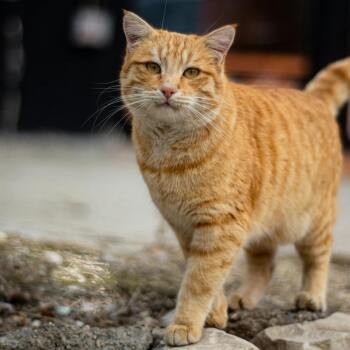American Shorthair

Bringing an American Shorthair into your home is like adding a calm, confident roommate who just happens to be exceptionally good-looking and emotionally supportive. These classic cats are known for their well-balanced temperament, good health, and easy-going personalities—making them one of the most beloved breeds in the U.S.
All the Right Traits
American Shorthairs are as adaptable as they are affectionate. They thrive in just about any environment—from cozy apartments to bustling households with kids and pets. These cats enjoy companionship but don’t demand constant attention, striking that perfect balance between cuddly and independent. With a soft voice and a big heart, they’re the kind of pet that simply makes life better.
Playful but not hyperactive, American Shorthairs love puzzle toys and playtime but are just as content to perch near a window or curl up beside you. They’re also known for their exceptional hunting skills—so don’t be surprised if you find them stalking dust bunnies or chasing imaginary prey.
A Few Quirks to Keep in Mind
While they’re generally low-maintenance, American Shorthairs do have a few quirks. They can be prone to weight gain if their love of lounging overtakes their playfulness. And while they adore affection, they’re not always fans of being carried around. These cats prefer to come to you on their own terms—thank you very much.
A Bit of History
This breed’s roots go back to the early settlers who brought them to North America on ships to control rodent populations. Over the centuries, they’ve earned their keep as working cats and loving companions. In fact, they were one of the first five breeds recognized by the Cat Fanciers' Association in 1906.
With their round faces, expressive eyes, and dense, plush coats that come in a wide variety of colors, American Shorthairs have the classic “all-American” look—paired with a sweet and stable temperament that’s hard to beat.
Genetic Predispositions for American Shorthairs
- Cardiomyopathy: Not Just a Dog Thing— American Shorthairs can develop hypertrophic cardiomyopathy (HCM), a condition where the heart muscle thickens over time, potentially leading to heart failure. It can be tough to spot until symptoms like rapid breathing or lethargy suddenly appear, so regular wellness exams are key.
- Blood Clots: Arterial Thromboembolism (ATE)— Cats with heart disease may be at risk for ATE, which occurs when a blood clot blocks blood flow to the back legs. It’s a true emergency, often marked by pain, dragging limbs, and vocal distress. Early detection of heart problems can help prevent this painful condition.
- FLUTD: Litter Box Troubles Might Be Medical— Feline Lower Urinary Tract Disease (FLUTD) can cause discomfort, blood in urine, and inappropriate urination. Male cats are especially at risk for dangerous blockages. If your Shorthair is straining or urinating outside the box, call your vet immediately.
- Kidney Disease: Slow But Serious— Chronic kidney disease is common in older cats, but some younger American Shorthairs can develop it due to genetic factors. Symptoms like increased thirst, vomiting, and weight loss deserve a vet visit. Diet and medications can help slow progression.
- Hyperthyroidism: Fast Metabolism, Hidden Problems— A benign tumor in the thyroid gland can cause overproduction of thyroid hormone, leading to weight loss, hyperactivity, and increased hunger. It’s common in middle-aged and senior cats but highly treatable once diagnosed with a simple blood test.
- Diabetes: The Sugar Situation— With sedentary lifestyles and a love for treats, American Shorthairs are at risk for diabetes mellitus. Symptoms include frequent urination, increased thirst, and weight loss. With proper diet and insulin therapy, many diabetic cats live long, healthy lives.
- Allergies: Itchy Skin Instead of Sneezes— Cats react to allergens with skin issues instead of sniffles. Overgrooming, red spots, or recurrent ear infections might indicate environmental or food allergies. There are lots of treatments available, from special diets to allergy medications.
- Polycystic Kidney Disease (PKD): A Genetic Threat— Though more common in Persians, PKD can affect American Shorthairs too. Small fluid-filled cysts develop in the kidneys and may cause renal failure over time. Genetic testing and routine lab work can catch it early and allow for supportive care.
- Hearing Loss: More Than Just “Selective Listening”— Some American Shorthairs—especially those with white coats and blue eyes—can have congenital deafness. While it’s not treatable, deaf cats can live happy lives with minor lifestyle adjustments and extra care indoors.
- Feline Blood Types & Breeding Cautions— Knowing your cat’s blood type is critical, especially in emergencies or if breeding is involved. American Shorthairs may have type B or AB blood, which can lead to complications like Neonatal Isoerythrolysis in kittens. Ask your vet about testing and record it for emergencies.
Ready to Learn More? We’re Here to Help!


